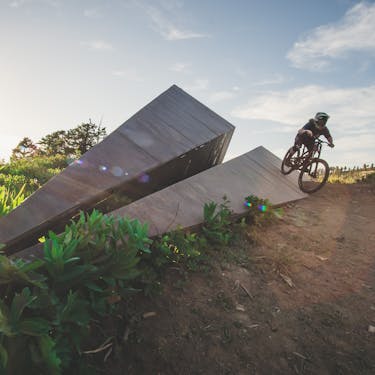
Launch Intention, Griffin Loop
Paper airplanes occupy an interesting space in the popular imagination: long associated with childhood play, they have nonetheless long been serious tools for exploring the intricacies of aerodynamics. Our desire to transcend gravity, the most elemental of sculptural forces, has long been fueled by folded paper in flight. This humble medium has also spurred real technological innovation. In the late 14th and 15th centuries, Leonardo da Vinci built paper models of his flying machines to test and improve his designs. Da Vinci’s machines were overly complex, steeped in observation of the natural world and built to mimic animal flight. The Wright Brothers built paper models of wings as they were designing their glider, testing them in a small wind tunnel. Even today, paper airplanes serve as inspiration for engineers studying the complex effects of air on drones and other small aircraft.

Griffin Loop, Launch Intention, 2014. Installation view, Powder Mountain.
This tension between the rigor of science and the freedom of play, between ancient and advanced technologies, is underscored in Griffin Loop’s monumental Launch Intention works, a series of large-scale fifty foot steel sculptures of paper airplanes the artist has installed in public projects across the United States. For Loop, public art can redefine everyday experience and expectation, creating a surreal wonder that galvanizes us and connects us more deeply to our surroundings. Imbued with optimism, hope, and the drive to will something greater than ourselves into action, the series began at Powder Mountain with Loop’s first Launch Intention work—the only interactive, rideable variation, which has become a beloved example of Powder Mountain’s fusion of immersive art and adventurous recreation. Whether providing shade or shelter or a banked turn on the mountain bike trails, the work engages the viewer differently in different conditions, changing with the seasons like so much of its surroundings.

Griffin Loop, Launch Intention, 2014. Installation view, Powder Mountain.